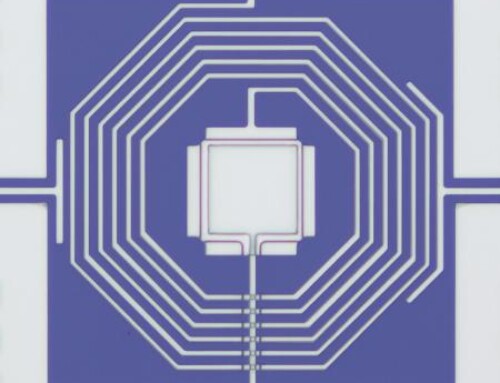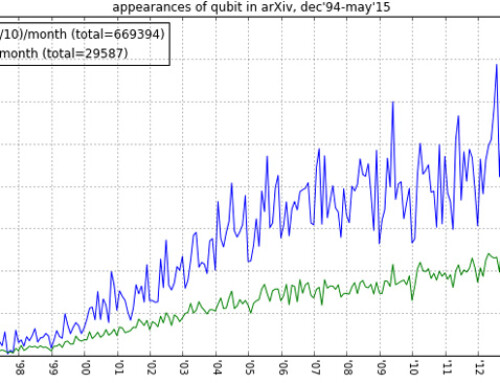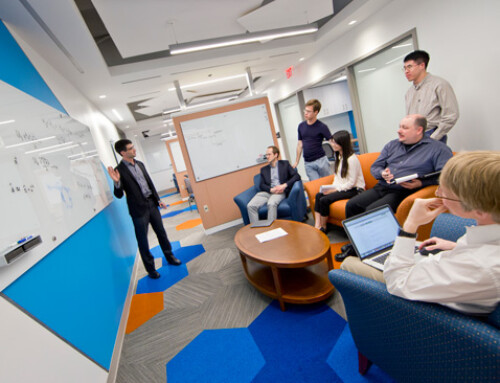I heard of Jeff Kimble long before I met him in person. Legend had it that he was extremely rigorous with research and very tough on nonsense. So when I decided to approach him in October of 1996, at the annual OSA meeting in Rochester for a possible postdoc position, I was as nervous as I was excited. As a graduate student, I had learned theory of quantum optics from Marlan Scully, and learned advanced experimental techniques from Jan Hall. The experiences working with Jan laid a critical foundation for my scientific work. Likewise, Jeff had spent a sabbatical with Jan in 1985 that enabled their work on squeezing, as well as Jeff’s subsequent research in cavity QED which provided me some comfort with this tall stranger. But, here was a guy who dealt with the annihilation operator as deftly in the lab as on paper; so I was hesitant. Then I listened to Jeff’s lecture on flying qubits and single-photon quantum logic gates – his speech from the Max Born Award. Armed with courage after surviving my own very first invited talk at OSA, I decided to give it a try.
I still remember most of our discussions from that first meeting, but none is as clear as my recollection of the pain from Jeff’s handshake. His grip was more than just firm; it actually squeezed the bones of my hand. So naturally, I took the handshake as a sign that he really wanted me to join his group. When an offer of a Caltech fellowship arrived three months later, I accepted it without hesitation. In 1997, I had no way of knowing that Jeff’s way of doing science would leave a profound mark on my career and that his deep friendship would continue to enrich my life and that of my family for many years.
After I arrived at Caltech, Jeff asked me to work on a project involving single-atom cavity quantum electrodynamics (cavity-QED). As a newcomer to the field, I studied the literature to educate myself on the relevant scientific context and learn latest tools of the trade. In its simplest form, cavity-QED describes the coupling of a single atom to a single mode of a radiation field. However, this deceptively simple system is rich for fundamental physics.
The development of the field of cavity-QED began in the 1970s and early 1980s in the disciplines of atomic physics and optical physics. The atomic physics community focused on solving the “boundary” problem for quantum optics, first identified by Casimir and Purcell. This effort led to the demonstration of suppressed spontaneous emission in a microwave cavity by Daniel Kleppner and electron radiation in an ion trap by Hans Dehmelt. Meanwhile, the optical physics community was studying optical bistability and other emerging nonlinear optical phenomena. Both communities focused on the dissipation dynamics of cavity-QED systems.
Herbert Walther soon realized the importance of coherent interactions for cavity-QED and revived the community’s interest in the Jaynes-Cummings model. This then turned into the main theme of modern cavity-QED: the study of the single quanta-dominated strong coupling regime, where quantum dynamics dominate over dissipation. For his part, Jeff pioneered the development of strongly coupled cavity-QED in the optical regime, in an effort parallel to the historical achievement of Serge Haroche, this year’s Nobel Laureate, on the microwave cavity with Rydberg atoms.
Jeff’s contribution has been profound. He established explicit connections between the boundary problem and optical bistability research in cavity-QED. More importantly, he pushed for an increasingly large role for coherent coupling between atoms and optical fields from the very beginning; in 1992, he was the first to demonstrate strong coupling in cavity-QED with the observation of “vacuum-Rabi” splitting for a single atom in an optical cavity.
Exploring new physics in the strong coupling regime has been one of the mainstays of Jeff’s scientific career. Quantum dynamics can no longer be treated in the perturbative limit. Researchers are now forced to explore genuine quantum dynamics. Such explorations have led to a revolution in the study of open quantum systems and quantum measurement. Jeff himself later went on to expand optical cavity-QED to touch on many areas of modern quantum physics: quantum measurement, open quantum system dynamics, quantum entanglement, and quantum information science in general.
It was with this scientific background that Hideo Mabuchi (then a graduate student of Jeff’s) and I started working together on an experiment to extract the full susceptibility of a single atom as it transits through a small optical cavity in the strong coupling regime. Our work was motivated by the goal of monitoring real-time quantum trajectories to describe an open quantum system in which evolution dynamics are conditioned upon measurement. We were initially bothered by a persistent birefringence inside the optical cavity. This birefringence was imprinted on the mirror reflection phases by the mechanical stress exerted on the mirror substrates. The uncertainty of the polarization eigenaxes and the differential phase shift introduced imperfection in the stabilization of the cavity resonance and introduced an error into the full amplitude-phase analysis of the transmitted optical field.
I took it upon myself to study this birefringence problem. I made a careful set of measurements, performed a detailed analysis, and determined the property of the cavity birefringence to high precision. I was asked by Jeff to give a presentation to the group. I remember that I did not take the talk very seriously, figuring that it was just a small technical step in the grand scheme of things that would be all quantum mechanical. After the talk when the dust had settled on questions and answers, Jeff said to the group, “Well, this is how serious measurements are made. Never mind big scientific pictures or theory framework, a serious experimental measurement is what we can contribute to science in the most meaningful way.” Somehow this statement was grilled deeply into my memory, perhaps because it came from a first-rate experimental physicist who was also an original thinker responsible for many of the theoretical concepts in quantum optics. I have certainly tried to pass down this perspective to my own students.
About six months into my postdoc tenure, Hideo and I finished our project. Hideo graduated and left for Princeton. Another graduate student, David Vernooy, teamed up with me, and our task was to create the first deterministic single-atom cavity-QED system. We needed to trap a single atom inside a high finesse cavity over an extended period of time and then use this atom over and over for whatever quantum tasks we could imagine to pile up on the poor fellow. Dave was so full of energy that by the time I got into the lab each morning, he had already ridden his bike up 2000 vertical feet and back from Mount Wilson behind Caltech. Later in life I would directly experience Jeff’s intensity performing this very same exercise. In any case, we emptied an entire lab and started building our apparatus from scratch. This was a terrific time in which I learned all kinds of experimental tricks by simply trying various schemes in the lab. Jeff trusted whatever Dave and I cooked up! It was the golden time in my life — I could play hard, but I had minimal responsibility!
There was a particularly memorable incident. I designed a vacuum chamber that would allow us to collect cold atoms in one location and then shuffle them into another place where the scientific cavity was located. However, I made a serious mistake in the design. The glass cell where we would do our initial laser cooling and trapping was connected at both ends to the main vacuum chamber. I knew that the stress on the cell could be a problem, so we added two bellows, one at each connection. We pumped it down and baked it out over the weekend. I went to the lab on Sunday night to turn off the heat, thinking that by Monday we could start aligning optics around the apparatus. When we returned to the lab the next day, we found a crack in the glass.
Thinking back on this incident, I always feel chagrined that I did not learn my lesson right away. What I actually did was to immediately drive to a local glass blower in Pasadena and ask him to make me a new glass cell. A week later, the new cell was in, pumped down, and baked. This time, we even cooled it down and arranged the optics for laser cooling around the cell. Two days later, we found the cell had imploded. I had a sense of despair that morning, along with a guilty conscience for taking a short cut. Jeff’s response upon seeing the pile of glass was “Oh Jun, Dave and you have worked so hard on this … Let’s move on.” Dave and I ordered a mini-vacuum octagon, with overnight delivery, placed it where the cell used to be, and because we already had so much experience in setting up pump, bake, and cool down, we got it running within a couple of days. The system would go on to become a workhorse in Jeff’s lab for the next 10 years.
Fast forward a year. I was then in my last few months as a postdoc in Jeff’s group. Dave and I labored hard, and we began to observe atomic trajectories from the cavity’s transmitted field. We used the atomic signals to trigger a classical trapping field to capture the atom while it was traveling through the cavity. We met with a small success: we observed that the selected atoms started hanging out a bit longer inside the cavity because of our control field. Jeff started to come in to the lab at night and over the weekends to work with us. He made pages of Mathematica calculations on the classical and quantum field distributions inside the cavity.
On the very last night of my Caltech postdoc career, with my wife and daughter sleeping in the on-campus club house of the Athenaeum and our furniture already on the way to Boulder, Colorado, Jeff, Dave, and I pulled off an all-night adventure in the lab. That night, we witnessed individual atoms remaining for about 1 second in the cavity when we asked them to. It was an incredible feeling when I walked out of the East Bridge Laboratory of Physics into a cool morning breeze in Pasadena. My ears echoed with Jeff’s excitement, “Jun, we have climbed on top of a hill now, and I can see so many flowers lying in the valleys ahead.” I boarded a plane to Denver that morning.
It turns out that the flowers would not blossom for a while. People had a hard time repeating the experiment with long trapping times. Jeff never wavered in his belief that what we saw that night was real. However, our experimental controls had not been robust, nor optimized. Careful investigations were launched into the thermal excitation modes of the cavity, parametric heating of the trap, polarization impurity of the intracavity light, and residual magnetic fields, and so forth. After a year or so of hard work, things did work again, this time systematically. Jason McKeever and colleagues in Jeff’s lab observed atoms trapped for multiple seconds inside the cavity, at any time they wanted. Finally, the flood gates opened. Accomplishments included the realization of a one-atom laser in a regime of strong coupling, the generation of single photons on demand, and the observation of photon blockade.
Jeff is a unique and distinguished scholar in the atomic, molecular, optical, and quantum physics community. His scientific vision and rigor, dual competence in experiment and theory, as well as the quality and impact of his published work all set very high bars for our field. He embodies many outstanding characteristics as a scientist. He is a daring pioneer, an original thinker, a groundbreaking technologist, and a relentless seeker of ultimate truth and knowledge. In the early days, I often wondered how he achieved these qualities in life. Finally, I started to peek into his secret sauce once I had a chance to develop a profound friendship with him. I have been invited back to Caltech many times, and Jeff has come to visit me and my family in Colorado a few times. We have ridden mountain bikes together, drunk Texas beer, and camped out in remote areas of Utah.
When our second daughter, Selene, was about 4 years old, Jeff came to our house for dinner. Selene had never seen a guy as tall as Jeff so she could not stop playing with him. One of their games was a two-person thumb war, where Jeff’s enormous palm would completely absorb Selene’s tiny one (and I hoped the squeeze was gentle). And yet, Selene’s thumb remained visible as she tried really hard to capture Jeff’s thumb. Watching from a distance, I saw Jeff’s complete absorbance in the game. I wished Selene had been old enough to realize how seriously Jeff was playing the game with her. He was playing with her with the same concentration that has characterized most things Jeff has wanted to pursue in life.
On this memorable occasion of Jeff’s being awarded the Herbert Walther Award from OSA and the German Physical Society, I could not help but write down these words to help celebrate his legacy and to thank him for the many things he’s given to us.
Jun Ye
Editor’s Note: Jun Ye, now a Fellow at JILA and NIST in Boulder, Colorado, worked in Jeff Kimble’s lab as a Robert A. Millikan Prize Fellow at Caltech from 1997 to 1999.



